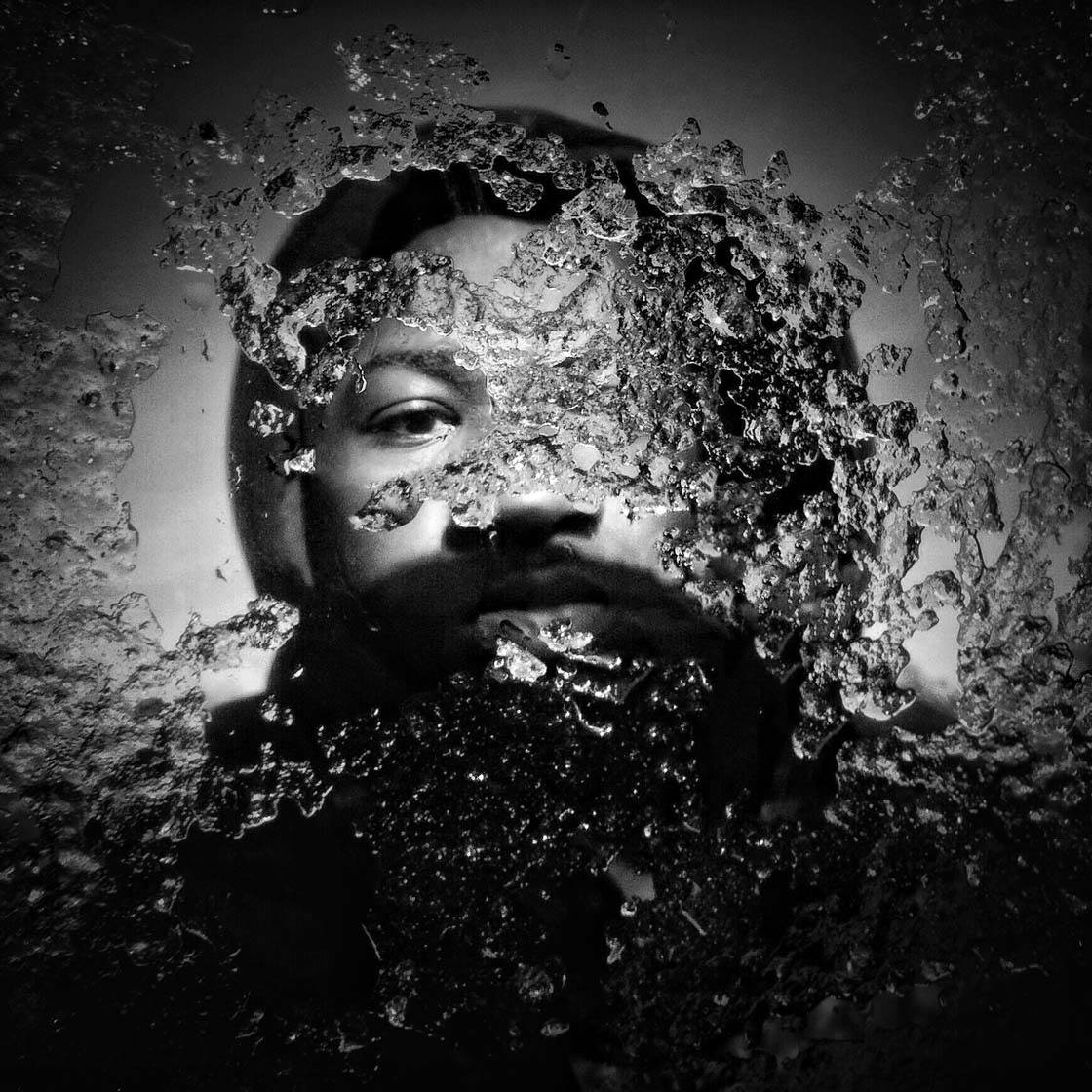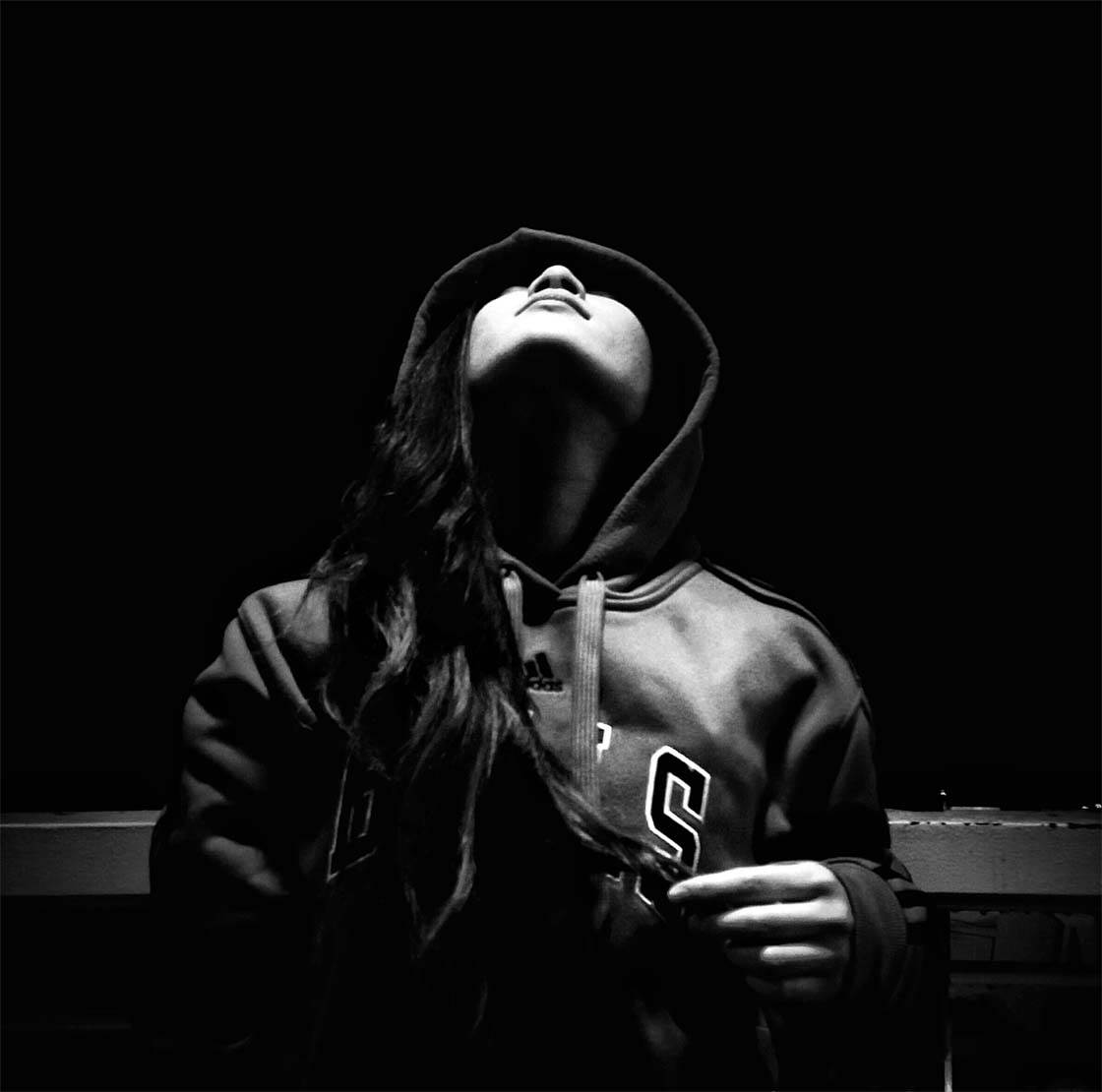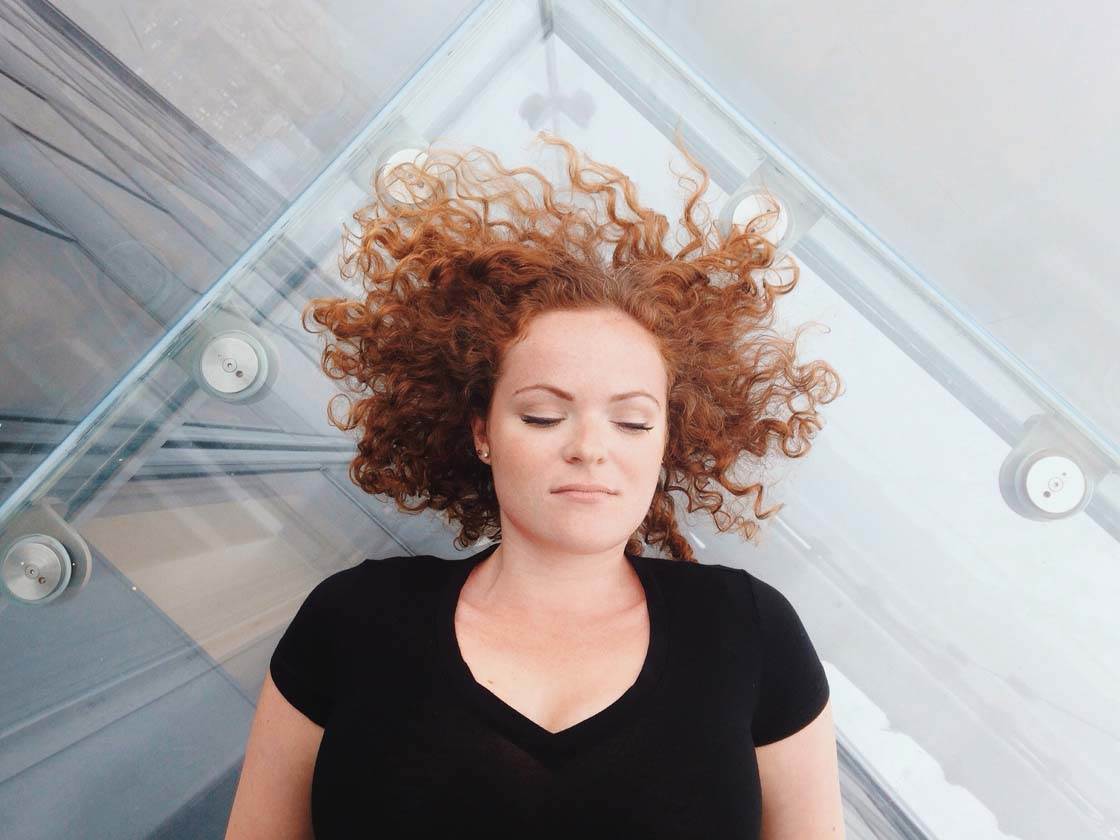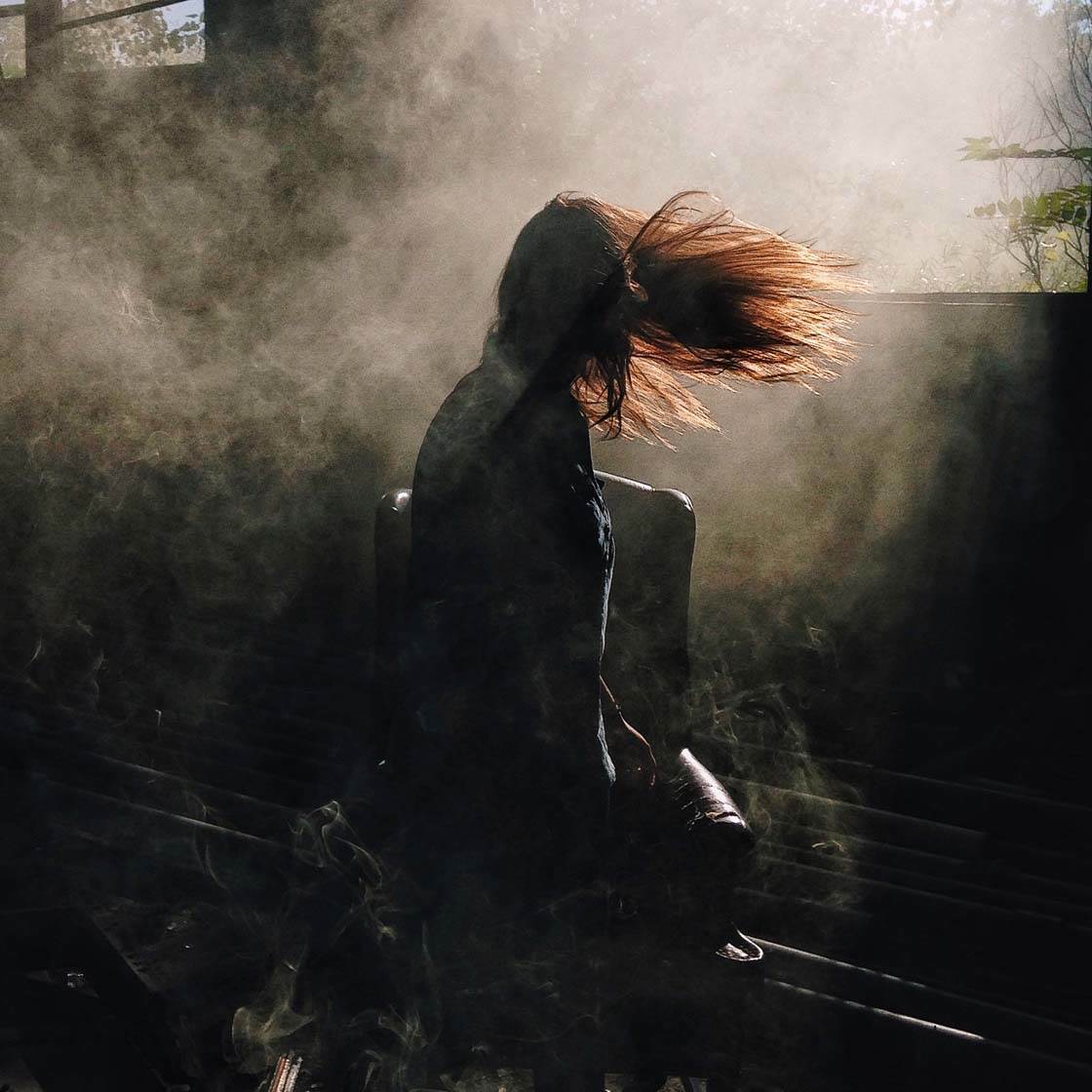Portrait photography is all about capturing people’s emotions and expressions, primarily by focusing on the subject’s face. However, there’s more to shooting portraits than asking your subject to smile for the camera. If you really want your portrait photos to make an impact, you need to get more creative. In this tutorial, you’ll discover seven great ways to make your iPhone portraits more unique, intriguing and captivating.

1. Shoot In Hard Light
We’re often taught to avoid taking photos in hard light as it tends to ruin photos. But you can actually shoot some of the most fascinating high contrast portrait photography using this kind of light.
Hard light is when you have a strong directional light source, such as the sun or a lamp, shining onto your subject. It results in crisp shadows being cast within the scene (as opposed to soft light which is diffused and casts much softer shadows).

Shadows can create wonderful patterns and lines that add an abstract quality to your photo. You can also use them to obscure part of your subject’s face to create an air of mystery or drama.
Shadows created from hard light take different shapes and forms depending on the environment you’re shooting in. And they’ll also appear differently depending on the time of day. The lower the sun is in the sky, the longer the shadows will appear.
To use hard light to your advantage, make sure you move around to find the right angle to shoot from. Your shooting angle and viewpoint will change where the shadows appear within your photo.

You can also move the subject around so that you have light and shadow just where you want it on their face. When positioned at just the right angle, shadows can help define the subject’s facial features. You can also use them to obscure part of their face, or put their face into the spotlight.
2. Use An Artificial Light Source
Natural light from the sun is great for shooting portraits, but what if you’re shooting portraits at night or in low light?
In these situations you can make use of artificial light sources to illuminate your subject. You could use a lamp, flashlight, street lamp, candle, or even the light from an iPad or computer.
It’s best not to use the flash on your iPhone because you won’t have any control over the direction of the light. It can only point straight ahead from where you’re shooting. You can, however, use the torch on a friend’s iPhone which can be directed at the subject from any direction.

Low light portrait photography creates a completely different atmosphere to shooting in daylight. The dark surroundings and directional light often create a dramatic mood in your photos.
When using artificial light, the direction that the light is coming from will make a big difference to how your subject is illuminated.
With portable light sources you can adjust the angle and direction of the light. But with fixed light sources, such as street lamps, you’ll need to move your subject instead.

In the photo above, the subject’s head is tilted upwards so that her face is lit up by the street lamp above her. Features such as the jawline are prominent because of the sharp contrast between light and shadow.
Using a small flashlight/torch can help you create a moody portrait when shooting at night. Direct the light toward the subject’s face, moving the light source around until you achieve the desired result.

If you shine the light so that only part of the subject’s face is illuminated, the result can look spooky and mysterious. For added drama, ensure you don’t illuminate any of the background.
3. Shoot In Rain
Rain is always a gift for photography, but many of us avoid it because we fear getting ourselves and our iPhones wet. However, being creative with rain photography doesn’t have to involve being outside in the pouring rain.
A great way of shooting creative portraits is to use the droplet formations on glass, such as bus stop window panes, coffee shop windows, etc.
Ask your subject to stand on the other side of the glass – you can wait until after the rain stops if they don’t want to get wet!

Make sure you tap to set focus on the raindrops, so that the droplets appear in sharp focus and the background becomes blurred.
Experiment with having your subject in different poses, such as looking up or placing their hand on the glass. Another great technique is to use the subject’s umbrella as a colorful backdrop.

Rain tends to creates a romantic, atmospheric feeling. Capturing this kind of shot at night, with the streetlights making the raindrops sparkle, can create a wonderfully dreamy mood in your images.

4. Shoot From An Interesting Perspective
You don’t always need to have your subject standing or sitting in a portrait photo. And you don’t always have to shoot straight ahead from standing height.
To make your portraits more interesting, experiment with shooting from more unusual perspectives. For example, you could ask your subject to lie down while you photograph them from above.

This technique worked really well in the photo above. There was interesting light and shadow falling across the floor, and shooting from this angle was the best way to capture this light on my subject.

In this photo, asking the subject to lie on the glass platform of a tall building meant that her hair could be splayed out for creative effect.
Shooting from a more unique angle will instantly give your portrait photos a more creative impact. Experiment with low angles and high angles to see just how different your images will look.
5. Use A Good Backdrop
The background is just as important as the subject in portrait photography. Whenever you’re photographing people, pay close attention to their surroundings.
If the backdrop is too distracting, move them to a better location. This might just involve moving a few feet, or you might have to adjust your shooting angle.
You can also try using the Portrait mode feature of your Camera app.
For instance, if you’re shooting outdoors and the background is very busy, shooting from a low angle will allow you to use the sky as your backdrop.

Shooting from a high vantage point allows you to use the ground as your background. This perspective works particularly well if your subject is standing on a staircase.
Our eyes are naturally drawn to leading lines and symmetry, so how about incorporating these powerful elements into the background of a portrait photo?

Even though the background in this city scene is quite busy, the leading lines draw the viewer’s eye right into the center of the photo toward the subject’s face.
When shooting in busy city locations, look out for symmetry and lines that you could use as the backdrop for your portrait photos. It can create a powerful composition with a strong sense of depth.
Whatever you choose as your background, it should complement the subject and allow them to stand out within the scene.
6. Add A Sense Of Mystery
It’s true that a person’s facial expression tells a story, but have you thought about keeping the subject’s face partially or completely hidden?
This can add a sense of mystery to the scene, making the viewer more intrigued about your photo and the subject.

By using a broken mirror for example, you can arrange the pieces in a manner that creates a visually appealing image with a wonderful sense of mystery.
Another way to create a mysterious atmosphere is to keep the subject “faceless.” Ask your subject to turn away from the camera, or use something to obscure their face such as their hair, a hood, a hat, a big leaf, their hands, etc.

Be on the lookout for other elements such as light that will enhance the magical mood of the portrait. In the photo above, light leaking through the plants gives the hair a lovely glow.

Smoke bombs are perfect for creating a more ethereal and mysterious atmosphere. These are especially powerful when you have light shining through the smoke.

Asking your subject to flip their hair creates a dramatic and mysterious faceless portrait which is unique by its own accord. When taking this kind of shot, use burst mode to capture multiple action shots.
7. Shoot Reflections
Reflections are a great technique to experiment with in portrait photography. A mirror is a really useful asset for creative portrait work. It could be a handheld mirror or another reflective surface such as the watch in the photo below.

When shooting reflection photos, play around with the the angle of the reflective surface and the angle that you shoot from. It can make a big difference to the appearance of the reflection.
Another thing to think about is how close your camera lens is to the reflective surface. In the photo below I got really close the reflection in the watch.

This created a really unique portrait that looks even more interesting when flipped upside down in post-processing.
By experimenting with the distance and shooting angle, you can create incredibly unique and surreal shots using reflective surfaces.
Conclusion
A great portrait doesn’t have to be a person in a traditional pose smiling at the camera. Candid shots and non-traditional setups will often result in far more interesting photos.
The best way to create more unique shots is to always try something completely new. Try to think of interesting ways to capture a portrait in a more creative way.
Experiment with lighting to create different moods and shadow effects in your image. Vary your shooting angle and the position of your subject, and don’t forget to use great backgrounds.
Don’t be afraid to create a bit of mystery in your photos. You don’t always need to show the face of your subject. Leaving something to the imagination will intrigue the viewer and keep their attention for longer.

Play around with props such as mirrors and reflective surfaces to capture a different take on reality. And the next time it rains, don’t just run for shelter – embrace the opportunity to get creative with water droplets in your portrait photos.
By experimenting with different techniques and ideas, you’ll always discover something new and your photography will never become stale. There really are endless ways that you can shoot interesting portrait photos.
So why don’t you find a willing subject and try out some of these creative techniques? You might be surprised at the amazing shots you can create together.


Leave a Reply
You must be logged in to post a comment.